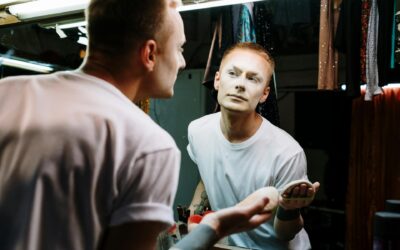Photo by RDNE Stock project on Pexels.
← CHAPTER OVERVIEW
What do we mean when we say communities, and why do we need them?
Dear Creatrix,
How did the exercise from the last lesson go? If you haven’t shared your cause yet, do it now! We’d all love to hear what is important to you, so we can support you.
But before we move on, I’d like to make sure that we all know what we are talking about.
Because when I think of community, I think of two different things.
One is the neighbourhood community, where people of all ages come together, support each other and help each other out, simply because they feel a connection because they share the same space and environment and most likely have known each other all their lives.
I was lucky enough to feel and watch this kind of community for the first time ever in Germany when I moved to a small village some years ago. It was very nice to see indeed.
I also experienced this in Ukraine to some extent, though the situation was a bit more complex there, as I lived in a minority community, within another minority community in a very remote region in Ukraine. So the alliances formed were definitely also political.
Which then also leads us to the other kind of community, which is a group of people who meet and come together because they share a certain interest or want to fight for a certain cause together.
As a queer person, for example, I always felt like I belong to a global queer community as well.
But a community like this could also be a local urban gardening community, or a church community, or a group that comes together to preserve wildlife, or wants to build or is building and maintaining a skate park, cultural events or anything like that.
So, this leaves us with two kinds of communities, one that lives together, naturally, grows together, goes through seasonal and regional changes together and where the members see each other regularly because they frequent the same places; schools, bakeries, doctors, events.
It’s based on attachment to a certain area and region, and often also based on generations knowing each other and growing up and living together over longer periods of time.
The other one is based on common interests, experiences and projects, and they might only come together for a certain time period.
Members don’t even necessarily all have to know each other, but just share a common ‘feature’ (queer, black, neurodivergent, etc.) or come together to fight for a certain cause.
This last one is the one we will be focusing on here in this course, though what we talk and think about can surely also be transferred to problems and solutions in village communities and families or teams or any group of people that comes together, really.
The focus of this chapter will be on, how we can come together and unite a group of people to combine our energies for a common goal.
And the reason, why it is so important to me to make this clear, is because the more vague we are, the harder things become.
If we want to create meaningful and lasting change, we have to use our energies wisely.
For example, I ran an organisation called Transnational Queer Underground, and with that platform, I published art and stories focused on the experience of being queer in this world.
The common goal that united the community around that, was to create more space for diverse queer perspectives and to show that being queer can mean many different things and that that’s not only OK, but actually pretty cool.
Now, with the CREATRIX School, the common goal is to CREATE a world, in which we can all live together peacefully – celebrating our differences.
What brings people together here is, that we all believe that we have to do the inner work and find clarity, confidence and connection within ourselves to help CREATING the changes we each would like to see in the world in the best possible way.
By doing so, we are creating a community of people who want to learn all it takes to live an empowered and free life – and to find out what that means by practising this in community with other people.
Because no one exists in a vacuum, and this is also why it is important to find, build and create our communities – the places where we experience true belonging and where we can come together to support each other.
Photo by SLAYTINA on Pexels.
As we were already looking at a cause that you might want to support, something that’s close to your heart in the last lesson, today I would like to a…














